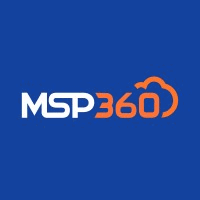Yes, most Managed Service Provider (MSP) applications may be accessed from multiple devices and platforms. This means you can quickly access your MSP software from a desktop computer, laptop, tablet, or smartphone, as well as from a variety of operating systems like Windows, Mac, iOS, and Android. This flexibility enables you to control your clients' networks and systems from any location, at any time, making your work more efficient and easy.
List of 20 Best Msp Software
Pulseway is the leading solution for remote system management, baseline management, and scheduled deployment. Designed with MSPs in mind, it offers end-to-end capabilities to efficiently address a range of issues. From remote system access to seamles...Read More Pulseway
HaloPSA is a Professional Services Automation (PSA) solution for Managed Service Providers (MSPs). This comprehensive software is specifically designed to meet the unique needs of MSPs, offering a convenient and streamlined system for managing servic...Read More HaloPSA
Narmada solution for MSPs seeking to improve their business operations. With features such as customizable technology and security reviews, vCIO dashboards, shared reports and dashboards, budget management, and more, Narmada empowers MSPs to efficien...Read More Narmada
ConnectWise Automate is a IT service management software built for MSPs. It integrates advanced automation, remote monitoring, and robust cybersecurity capabilities to streamline processes and provide exceptional services. With ConnectWise Automate,...Read More ConnectWise Automate
MSP360 is a MSP software designed for Enterprises, SMEs, and StartUps. With a range of features including Dashboard, Remote Access, and Scheduling, MSP360 offers a complete solution for Web App and Android management. Simplify your handling and gain...Read More MSP360
Spiceworks is customer service software that enables streamlined help desk processes for your organization, be it in the office or on-the-go. With its advanced ticket management system, it enhances customer support practices and fosters a more effici...Read More Spiceworks
Unitrends MSP is a backup and recovery software designed to simplify data protection for businesses of all sizes. Its intuitive dashboards, smart workflows, automation, and visually appealing customer reports provide a seamless experience for managin...Read More Unitrends MSP
ManageEngine RMM Central solution for MSPs to efficiently manage and monitor multiple client networks from a single centralized console. With a comprehensive set of features, RMM Central streamlines daily tasks for MSPs, reducing the need for excessi...Read More ManageEngine RMM Central
SolarWinds Threat Monitor - a game-changing MSP management and monitoring tool that caters to the needs of all types of agencies. Its all-in-one platform offers top-tier services like data protection, compliance reporting, IP protection, and activity...Read More SolarWinds Threat Monitor
Liongard is a platform for MSPs. Streamline your workflow with centralized data visibility and automated features like discovery, documentation, and auditing. Boost productivity, standardize processes, and secure customer systems with ease. Spend les...Read More Liongard
Comodos robust antivirus software provides top-notch defense against malicious software, viruses, and hidden files. It utilizes cutting-edge cloud technology to quickly scan your device and continuously updates its database with the latest global mal...Read More Comodo
Auvik, the premier Macintosh-focused software for online asset management. With its robust features such as software inventory, transaction tracking, and network analysis, Auvik is the ideal MSP billing solution for businesses looking to effectively...Read More Auvik
ServiceTree is a Professional Services Automation solution for MSPs and IT teams. Our platform is designed to revolutionize the way you manage your services, utilizing the power of Knowledge Driven Process Automation through our Open Next and Decisio...Read More ServiceTree
RemotePC is a remote desktop solution perfect for businesses, teams, and clients. Its intuitive dashboard and extensive capabilities make connecting, collaborating, and managing remote sessions effortless for both PC and Mac users. With RemotePC, enj...Read More RemotePC
Altaro VM Backup is a backup software specifically designed for small and medium-sized businesses with up to 50 host servers. Its powerful performance and competitive pricing make it an ideal choice for keeping your valuable data safe and secure. Wit...Read More Altaro VM Backup
Barracuda Backup: solution for simplifying data protection across your entire infrastructure. This powerful software lets you easily backup data, whether its stored on-premises or in the cloud, giving you peace of mind knowing that your data is alway...Read More Barracuda
Acronis offers industry-leading backup, disaster recovery, and data access solutions for individuals, small and medium-sized businesses, and enterprises. Their comprehensive suite includes efficient software for backing up physical, virtual, and clou...Read More Acronis
ConnectWise is a desk management tool that delivers a robust ticketing system to enhance your customer support. Trusted by industry experts, this software optimizes processes within your company for increased productivity. With its extensive capabili...Read More ConnectWise
Kaseya VSA is a IT systems management solution that streamlines and automates processes for your organization. With integrated features, this platform eliminates the need for multiple tools, allowing for efficient IT service delivery. Centrally manag...Read More Kaseya VSA
Learn More About Msp Software
- What Is MSP Software?
- What Are The Recent Trends In MSP Software?
- Benefits Of Using MSP Software
- Important Factors To Consider While Purchasing MSP Software?
- What Are The Key Features To Look For In MSP Software?
- Why Do Businesses Need Msp Software?
- How Much Time Is Required To Implement MSP Software?
- What Is The Level Of Customization Available In MSP Software?
- Which Industries Can Benefit The Most From MSP Software?
- Conclusion
What Is MSP Software?
MSP software is a form of software developed expressly for managed service providers (MSPs). These are IT organizations that provide remote administration and support services to businesses that lack the resources or knowledge to handle their IT requirements in-house. MSP software provides a consolidated platform for MSPs to manage and monitor their customers' IT systems, networks, and devices.
It often contains a set of tools and capabilities that enable MSPs to remotely access and solve issues, proactively monitor and address prospective problems, and automate routine tasks. One of the primary benefits of adopting MSP software is that it reduces the time and effort required to manage numerous clients' IT environments. It enables MSPs to efficiently manage operations such as software upgrades, patching, and backup and recovery for their whole client base.
Another advantage of MSP software is that it enables more efficient communication between MSPs and their clients. With real-time monitoring and reporting capabilities, MSPs can immediately identify and resolve issues, keeping their clients informed and minimizing disruption to their operations. When selecting MSP software, look for a system that provides complete monitoring and administration capabilities, interfaces with other critical tools and platforms, and an easy-to-use interface. It should also include dependable security features to protect sensitive customer data and meet regulatory compliance requirements.
What Are The Recent Trends In MSP Software?
MSP software has grown steadily over the years, adding new features and functionalities to meet the ever-changing needs of managed service providers. As the demand for MSP services grows, so does the need for sophisticated software solutions to streamline operations, increase productivity, and boost customer satisfaction.
Here are some of the current trends in MSP software that consumers should consider before making a purchase:
1. Remote Monitoring And Management: With the advent of remote and hybrid work models, MSP software's remote monitoring and management (RMM) features have become increasingly important. RMM enables MSPs to remotely monitor and control their clients' devices, networks, and systems. This functionality not only enables preventive troubleshooting and maintenance, but also minimizes the need for on-site visits, saving time and money for both the supplier and the client.
2. Automation And Artificial Intelligence: Automation and artificial intelligence (AI) are transforming how MSPs function. These technologies allow MSPs to automate regular chores like patch management and software updates, freeing up time to focus on more important work. AI-powered technologies can also assist identify and resolve issues before they become serious problems, resulting in smoother operations and improved service for clients.
3. Cloud-Based Solutions: As cloud services become more widely used, MSP software is shifting to cloud-based solutions. These technologies provide MSPs with greater scalability, flexibility, and accessibility, allowing them to manage their clients' systems and networks from anywhere and at any time. Furthermore, cloud-based MSP software frequently includes built-in security protections to ensure the safety of clients' data and systems.
4. Improved Cybersecurity: Security concerns are on the rise, and MSPs are increasingly becoming targeted for cyberattacks. As a result, MSP software increasingly contains strong security features like data encryption, multi-factor authentication, and remote access control to safeguard both the provider's and their clients' systems and data.
5. Integration With Other Technologies: MSPs use a variety of technologies and platforms to deliver their services, including CRM, PSA, and RMM. Integration of these tools with MSP software has become critical for improved workflow management, data sharing, and efficiency. Buyers should search for software that integrates well with other important products to boost overall performance.
Benefits Of Using MSP Software
MSP software, often known as managed service provider software, is a sophisticated tool that assists businesses in effectively managing and monitoring their IT services. It streamlines many processes, allowing organizations to provide great service to their customers.
In this buyer's guide, we'll go over the advantages of using MSP software so you can make an informed decision when acquiring one for your company.
1. Centralized Management And Monitoring: One of the primary advantages of adopting MSP software is that it gives a single platform for controlling and monitoring all of a company's IT services. This eliminates the need for several tools and logins, saving time and effort for IT personnel.
2. Increased Efficiency And Productivity: MSP software automates regular processes and workflows, freeing up IT experts to focus on more important responsibilities. This increases efficiency and productivity, which leads to greater service delivery and client satisfaction.
3. Proactive Approach To IT Management: MSP software enables firms to take a proactive approach to IT management. The software monitors network devices, servers, and applications in real time, discovering faults before they become severe problems. This helps to avoid downtime and reduces the impact on corporate operations.
4. Scalability And Flexibility: MSP software is scalable and flexible, making it appropriate for enterprises of all sizes. As a company expands and its IT needs change, the software may be readily scaled up to meet the new demands.
5. Cost Savings: Investing in Microsoft SharePoint software can result in long-term cost savings. Businesses can reduce operational costs and spend less on IT resources by automating operations, minimizing downtime, and enhancing efficiency.
6. Enhanced Security: MSP software provides strong security features including data encryption, access controls, and intrusion detection to protect sensitive corporate information from cyber attacks. This is especially crucial for businesses that handle confidential information.
7. Increased Client Satisfaction: MSP software enables organizations to give faster response times and higher service quality to their customers. This, in turn, leads to higher client satisfaction, allowing firms to establish a loyal consumer base.
Important Factors To Consider While Purchasing MSP Software?
When it comes to choosing MSP (Managed Service Provider) software, there are a few key elements to consider to ensure you choose the best choice for your company.
We will go over the most important things to consider while buying MSP software.
1. Scalability: Before making a purchase, you should analyze the software's scalability. As your business develops and evolves, you will require software that can adapt and meet your changing needs and demands. Make sure to select MSP software that is scalable and can support your company's expansion.
2. Features And Functionality: Each MSP program has its own set of features and capabilities. It is critical to understand your company objectives and select software that includes the functions required to successfully manage and monitor your IT infrastructure. Some important features to look for are remote monitoring and management, a ticketing system, security management, reporting, and automation capabilities.
3. Integration: Businesses frequently employ various programs and technologies to ensure smooth operations. When picking MSP software, it is critical to ensure that it is compatible with other technologies that your company is already utilizing. This will enable seamless integration while eliminating the need for manual data entry and synchronization.
4. User-Friendly Interface: In business, time is of the essence, and a complex and difficult interface can impede production and efficiency. Look for MSP software with a user-friendly and intuitive design to help your team navigate and use the software successfully.
5. Support And Training: As with any new product, it is critical to have solid technical support and training resources. Choose an MSP program that provides full onboarding and training to ensure your staff can use it effectively. A responsive and skilled support crew can also help resolve any issues and guarantee that the product runs smoothly.
6. Security: As cyber risks and data breaches increase, it is vital to select MSP software that prioritizes security. To keep your business and clients' data secure, look for software that includes solid security features such as data encryption, multi-factor authentication, and frequent security updates.
7. Pricing: Finally, analyze the MSP software's pricing structure and whether it meets your budget. Before making a purchase, make sure you understand the pricing and any additional expenditures, such as license, maintenance, and support fees.
What Are The Key Features To Look For In MSP Software?
When it comes to selecting the best Msp Software, there are numerous crucial features to consider. These features will not only help you make an informed decision, but will also guarantee that the program fulfills your specific demands and specifications
Before you make a purchase, below are the main things to look for in MSP Software.
1. Scalability: Scalability is a key feature to look for in Msp Software. Your company may expand in the future, and you require software that can accommodate that expansion without constraints. Look for software that can support a high number of devices, customers, and endpoints to meet your company's requirements.
2. Centralized Management: MSP Software should include a centralized management system that allows you to simply streamline and manage your clients' networks. This includes capabilities such as remote monitoring and management, automated upgrades, and real-time notifications, which enable you to proactively fix issues and give excellent support to your clients.
3. Automation: The ideal MSP Software should automate daily operations and processes, eliminating the need for manual intervention and saving you time and effort. Look for services like automated ticketing, patching, and reporting to boost your overall efficiency and productivity.
4. Security: Security is critical while managing and monitoring your clients' networks. To protect your clients' data and systems, make sure the Msp Software includes comprehensive security features like antivirus, firewalls, and intrusion detection.
5. Integration Capabilities: Msp Software should be able to integrate with other tools and platforms to expand its functionality. This could involve integrating with RMM (Remote Monitoring and Management) tools, PSA (Professional Services Automation) software, and backup and disaster recovery solutions to create a complete solution for your company.
6. Customizability: Each organization has unique demands and requirements, and your chosen Msp Software should provide configurable features to ensure that it meets your needs exactly. Look for software that lets you customize workflows, dashboards, and reports to match your company operations.
7. User-Friendly Interface: When choosing MSP Software, it is critical to have a user-friendly interface. Your technicians must be able to navigate the software and complete their jobs without difficulty. This would not only increase their production but also save time and resources on training. By taking these main qualities into account, you can ensure that you select the best Msp Software for your business needs and allows you to deliver excellent service to your clients. Make sure to thoroughly consider these aspects before making a selection.
Why Do Businesses Need Msp Software?
Businesses now rely largely on technology to streamline operations and increase productivity. However, managing and maintaining this technology can be challenging, particularly for small and medium-sized firms with limited resources. This is where Managed Service Provider (MSP) software comes in. MSP software is a comprehensive platform that gives businesses the tools and skills they need to manage their IT infrastructure efficiently. But why should firms use MSP software?
Let's look at the primary causes.
1. Proactive Monitoring And Maintenance: One of the most significant advantages of MSP software is its ability to proactively monitor and manage a company's IT infrastructure. This implies that the software constantly checks the health and performance of a company's systems and devices, detecting and addressing problems before they worsen and cause substantial interruptions. This allows firms to avoid costly downtime and keep their systems functioning properly.
2. Centralized Management: MSP software enables firms to manage their complete IT infrastructure through a single, centralized platform. This removes the need for various tools and systems, resulting in less complexity and greater efficiency. Businesses can simply track their hardware and software assets, monitor network performance, and distribute updates and patches from a single location, saving time and resources.
3. Cost Savings: Outsourcing IT to a managed service provider can be costly, making it unsuitable for the majority of small enterprises. However, MSP software enables firms to manage their IT in-house for a fraction of the cost. Businesses can drastically decrease IT expenses by automating mundane tasks and optimizing processes.
4. Improved Security: Data breaches and cyber attacks pose a constant threat to businesses, and the repercussions can be disastrous. MSP software has advanced security features like firewalls, intrusion detection, and encryption to help guard against these threats. This protects sensitive information and crucial systems, offering businesses piece of mind.
5. Scalability: As organizations develop, their IT requirements change. MSP software is scalable, which means firms can quickly add or remove devices and services as needed. This means that the software can adapt to the changing needs of a firm without incurring additional fees.
How Much Time Is Required To Implement MSP Software?
The amount of time necessary to adopt MSP software is determined by a variety of factors, including the complexity of your business operations, the number of users, and the specific features and capabilities of the program you select. A basic setup often takes a few days to a few weeks, whereas a more comprehensive implementation can take several months. Typically, the data migration procedure comes first when adopting MSP software.
This entails moving all of your existing data and workflows to the new system, which might take some time depending on the quantity of data you have and the software's compatibility with your current systems. The program must then be set up and configured to meet your specific business requirements. This may include developing unique workflows, configuring user permissions, and integrating the program with other tools and apps.
The difficulty of this stage varies widely and may necessitate the assistance of a trained professional. Once the program is installed, your team will need to be taught on how to utilize it properly. Many MSP software suppliers give training classes, either in-person or online, to ensure that your team has the skills needed to operate the software effectively. Consider how long it will take your team to adapt to the new software and optimize their workflows. While the program may be simple and easy to use, some employees may experience a learning curve, which might affect the total implementation timeline.
What Is The Level Of Customization Available In MSP Software?
MSP (Managed Service Provider) software is designed to simplify and improve IT service management, allowing businesses to manage their systems and networks more efficiently. One of the most important features of MSP software is its capacity to be customized and tailored to a business's specific needs. The level of customisation possible in MSP software varies based on the provider and their offers, so purchasers should thoroughly assess their needs and compare possibilities before making a decision.
To begin, it's important to understand that MSP software provides a wide range of features, including remote monitoring and management, automation, reporting, and more. Each of these features can be tailored to match the specific requirements of a company. For example, a corporation with a big number of devices may require more advanced remote monitoring capabilities, whilst a small business may only want simple tracking choices.
MSP software enables consumers to select and configure the features they need, saving money on extraneous functions. MSP software can also be tailored to specific layout and user experience requirements. Buyers can configure their dashboards, reports, and alerts, among other things, to meet their preferences and individual needs.
This not only enhances the user experience, but also enables organizations to create a more efficient and streamlined workflow that is tailored to their individual requirements. Some MSP software providers also allow businesses to add their own branding and logos to the program, making it more customized for their customers. This level of personalization can help firms increase brand recognition and generate a distinct image in their market.
Furthermore, MSP software frequently has the ability to interact with other systems and tools, such as ticketing, billing, and more. This provides firms with a centralized platform to manage their operations, eliminating the need for different software solutions. Buyers should carefully investigate the compatibility and integration options provided by various MSP software vendors to guarantee that the software chosen will work flawlessly with their existing systems.
Which Industries Can Benefit The Most From MSP Software?
MSP software, also known as Managed Service Provider software, is an essential tool for companies that offer IT services to their customers. It enables MSPs to manage and monitor their clients' IT infrastructure more efficiently, increase service delivery, and, ultimately, improve the entire client experience. The advantages of MSP software are numerous, but it is critical to understand which industries would gain the most from this technology.
We'll look at which sectors can gain the most from using MSP software.
1. Information Technology (IT) Industry: The most obvious industry to profit from MSP software is the IT industry. MSP software is built primarily to help MSPs manage their clients' IT infrastructure. MSPs can manage their clients' IT needs more efficiently, reduce downtime, and improve service delivery by implementing features such as remote monitoring and management, ticketing systems, and automation. As a result, IT organizations may use MSP software to streamline their processes, increase efficiency, and improve the customer experience.
2. Healthcare Business: As new technology and data management solutions emerge, the healthcare business evolves rapidly. MSP software is a crucial tool for healthcare providers because it allows them to manage their IT needs, secure patient data, and maintain compliance with standards like HIPAA. Healthcare providers may use MSP software to simply monitor and manage their networks, keep their systems up to date, and respond fast to possible threats. This not only improves operational efficiency, but it also ensures the security and privacy of patient information.
3. Education Industry: In today's digital age, technology is essential for offering high-quality education. Educational institutions have extensive IT infrastructure that requires continual monitoring and administration. MSP software can help manage various devices and systems across several campuses, ensuring a consistent learning experience for students and teachers. Furthermore, it assists educational institutions in keeping their systems current, secure, and compatible with regulatory standards.
4. Financial Business: The financial business handles sensitive information, so data security and privacy are critical. MSP software adds an extra layer of security by allowing financial institutions to monitor and manage their systems, detect and respond to potential threats, and maintain ongoing compliance with requirements such as PCI DSS. Furthermore, MSP software can automate mundane processes, easing the pressure on IT workers and allowing them to focus on more important projects.
5. Legal Industry: Technology plays an important role in document management, communication, and data storage in the legal field. Legal firms can use MSP software to successfully manage their complex IT infrastructure, ensuring that their systems are up to date, secure, and compliant. By automating typical operations and offering real-time monitoring and management, MSP software increases legal teams' efficiency, allowing them to provide better services to their clients.
Conclusion
To summarize, while selecting MSP software, it is critical to thoroughly analyze your business needs, budget, and desired features before making a decision. It is critical to investigate and compare various possibilities, read reviews, and possibly even schedule demos to gain a better idea of the software's capabilities. It is also critical to select a respectable and well-established company that provides dependable customer service and regular upgrades to ensure a smooth and flawless experience.
Remember to evaluate the software's scalability as your firm grows in the future. With the appropriate MSP software, you can optimize your business processes, increase productivity, and ultimately boost profitability. Following this buyer's guide will allow you to confidently make an informed decision and select the best MSP software for your business requirements. We hope you found this advice useful in your search for the best MSP software for your organization.
Msp Software FAQ's
Can MSP Software Be Accessed Across Multiple Devices And Platforms?
Is MSP Software Future-Proof And Adaptable To Emerging Technologies Like AI, Blockchain Or IoT?
Yes, Msp Software is future-proof and adaptable to emerging technologies such as artificial intelligence, blockchain, and Internet of Things. It is intended to support and integrate with emerging technologies, allowing organizations to stay competitive in this fast changing digital market.
With its advanced features and capabilities, Msp Software can seamlessly integrate these technologies into its platform, giving businesses the flexibility and scalability they want to stay up with changing market demands. It ensures that enterprises may reap the benefits of modern technologies while increasing overall efficiency and production.
Is There A Free Trial Offered To Assess MSP Software Before Committing?
Yes, most MSP software vendors provide a free trial period so that interested users can evaluate the product before making a commitment. This trial period normally lasts 14 to 30 days and allows consumers access to all or most of the software's functionality. It's an excellent opportunity to evaluate the software's capabilities and see if it matches your requirements before investing in a subscription.
Does MSP Software Offer Data Security Features And Meet Regulatory Compliance Standards?
Yes, Msp Software provides data security safeguards to ensure the confidentiality of sensitive information. Our program protects data using encryption and strong security measures. It also complies with many regulatory standards, including HIPAA, GDPR, and PCI DSS. We conduct security assessments and updates on a regular basis to ensure compliance with ever-changing requirements. Msp Software will keep your data protected.
Can MSP Software Integrate Seamlessly With Existing Tools And Platforms?
Yes, MSP software is intended to work smoothly alongside existing tools and platforms. It is extremely adaptable and may be adapted to meet the specific requirements of an organization.
Its broad APIs allow it to readily integrate with a variety of systems, including CRM, HR, finance, and project management applications. This ensures a smooth flow of data and streamlines procedures, increasing efficiency and production. MSP software can also interact with third-party apps, resulting in a comprehensive and unified solution for project and resource management.






















